You’d have had a London plan if you visited us when we lived there. We’d likely have joined you on a vintage train ride to Windsor, visited Harrison’s clocks in Greenwich, toured the Natural History Museum, driven out to Shaw’s Corner or visited the Chelsea Physic Garden. There was more, so many more things you introduced to us.
We’d have shared our knowledge and access to the British art of artefact concentration in institutions like the V&A, The Tate galleries, the British Library, the Science Museum and the Royal Academy. It’s hard to condone some aspects of such collections but the fact is that they are there in London. Public. They would have been all the more interesting because you probably chose to coincide your visit with a specific exhibition or event. There were so many things available in London that the days of your visits would have been filled with wonder. The evenings and nights would be packed too; some plays, a few musicals and lots of good dining.
When you weren’t with us, we were just as busy. Lia might have spent days in research in the London Library, for example, while I was indulging my passion for long distance walking.
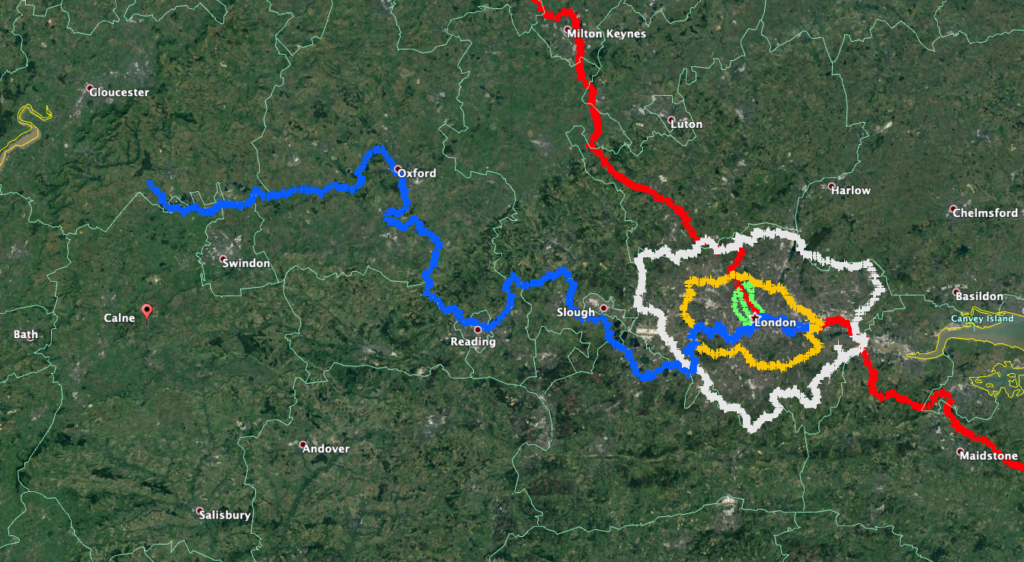
I have walked almost 300 km on the Thames Path, a journey that took me from from Woolwich to the head of the river in Gloucestershire, where the Isis springs from a field. I walked east to west and walked the London stretches many times. To be honest, I’m not sure I enjoyed it beyond Oxford. A river walk is rather flat and the walking stride becomes monotonous and downright tedious at times. Happily, I only got lost where the water and the river signage went missing out near Kemble.
I completed the whole 240 km of the London Loop, 24 stages, in 14 days spread over three months. Living beside Victoria station made it a convenient hub, public transport radiating me to starts and ends. Some of the walks required two ninety minute commutes, such is the scale of the city. An age related and resident bonus was the free travel after 0930.
I had ambled 125 km clockwise for seven days to complete the Capital Ring. That was more manageable and familiar. I’d done it in 2015 because of the lack of tickets to watch Irish rugby in the world cup. So I had walked from the Olympic Stadium in Stratford to Wembley and a week later, from Wembley on to Twickenham. The pace of redevelopment is astounding and quite a lot had changed in the intervening four years.
I also walked the entirety of three of London’s hidden rivers and segments of many more. There were any number of advantages to peremptory retirement while still locked into a rental lease in Westminster.
These treks of mine were made all the easier for me because of the books I’d read and continue to read about the places my feet might take me. Questions and answers abound.
- What inspired great storytelling? The Wind in The Willows for example is on the Thames Path. Three Men in a Boat too. These were places to be visited.
- Don’t you want to see unusual aspects of a city? Iain Sinclair’s books are a great introduction. London Orbital (2002) compels a walk of the Capital Ring while Downriver (2004) puts the Thames firmly on any walker’s agenda.
- What’s changed since the Iceni took on the the Roman Empire? The birthday gift of the classic hardback A Wanderer in London (1906) made me curious to see the changes firsthand. The London Compendium (2003) helped me assimilate it and plan it.
- What might I have missed? The Way to the Sea (2019) came after I walked the Thames estuary a few times. And of course, I missed things I could go back to and there are estuary reaches that curated paths don’t reach.
There are guide books that suggest the best ways to walk these paths, accounting for transport, watering holes and accommodation. Literally thousands by thousands of people through centuries and millennia helped me enjoy the walks.
I walked under the Thames, through the three tunnels still accessible to pedestrians. The Rotherhithe Tunnel is by far the scariest because you are cheek by doorhandle with the cars while inhaling their fumes and curiously, the pavement is littered with spent silver bullets of nitrous oxide. I walked the Greenwich Foot Tunnel several times amid kamikaze cyclists under the stalactites that serve to remind you of the weight of water. I took a detour to use the thousand-people-a-day path of the Woolwich Foot Tunnel which, having opened in 1912, brings to mind the possibility that I was walking in the exhalations of 36 million people.
I walked over several of the rivers, the so called hidden rivers of London. I was guided in part by Tom Bolton’s London’s Lost Rivers and it got suitably wet and dog-eared along the way. Not because of the rivers, many of which are culverted below the streets, but because it rained so much that I could hear the water below me. And the guide book told me which were the best drains.
Some of the map that sits at the top of this journal was interesting to our landlord. We had invited him around for a chat and a drink, as you do. It turned out that he’s a walker too. Before you could rattle another ice cube in the glass, we had our phones out comparing near identical photos of places where the culverted rivers crossed train tracks. That night, he left another classic book on London’s forgotten rivers at our door.

It was great to meet someone else who knew that the Westbourne River walk starts with a walk up stairs from Hampstead tube station, the deepest on the underground. He knew that the Westbourne, the Tyburn and the Fleet all rise on Hampstead Heath. He’d taken the same photo in Kentish Town where the Tyburn crosses the railway. And Sloane Square Tube station where the Westbourne goes over the platform. He also knew that the culverted Tyburn runs between our flat and my office building in Victoria, winner of the coveted Carbuncle Cup 2017. Nova Victoria.
Coincidences. Detectives, engineers and scientists may doubt them but walkers can accept them with pleasure.

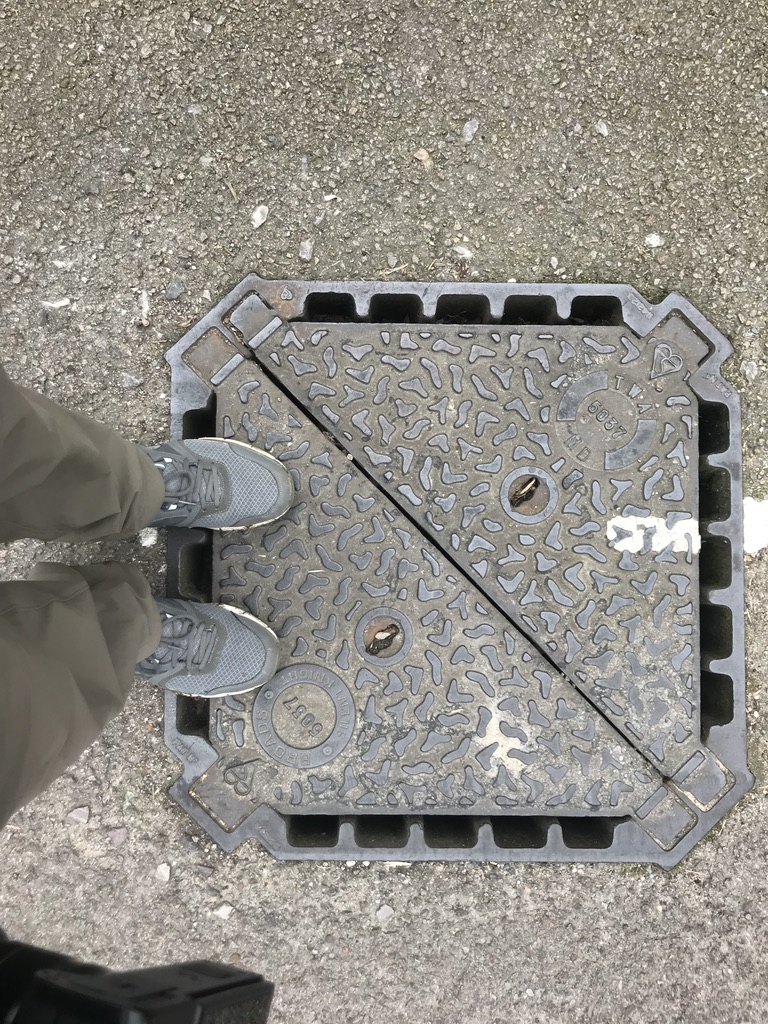
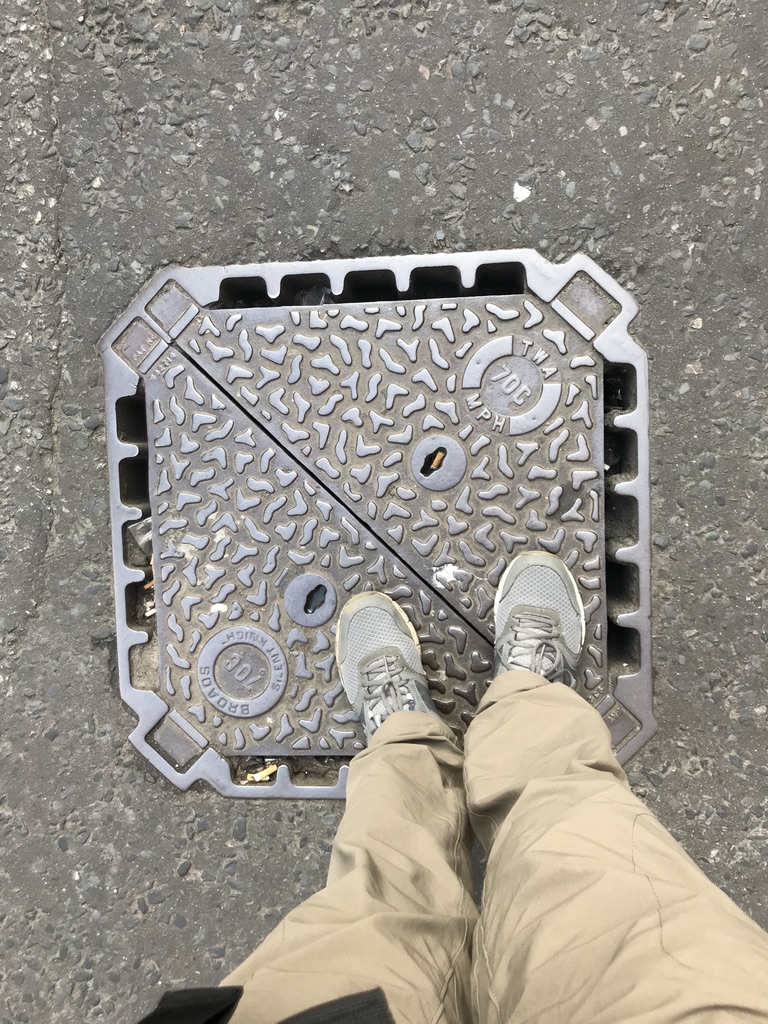
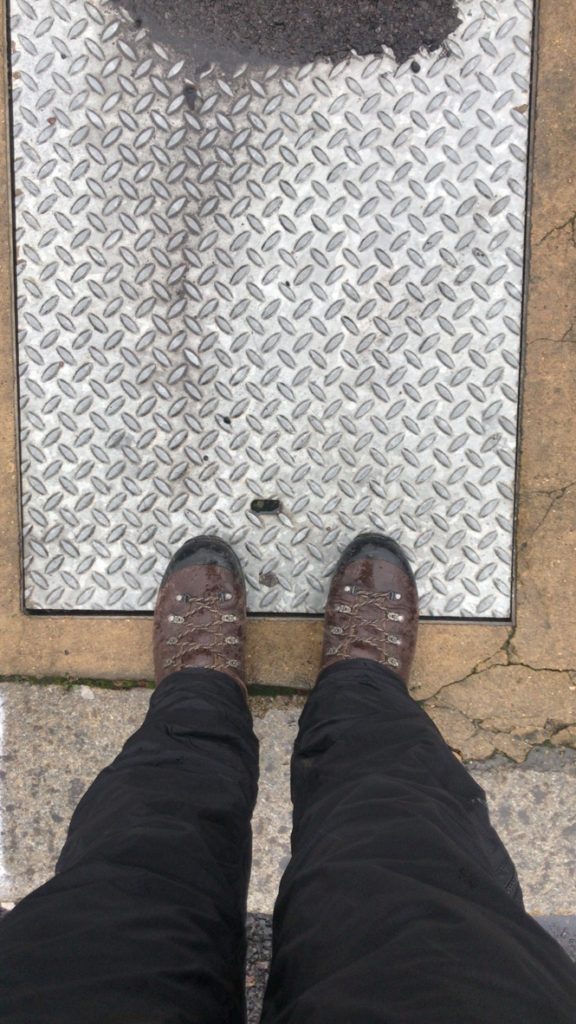
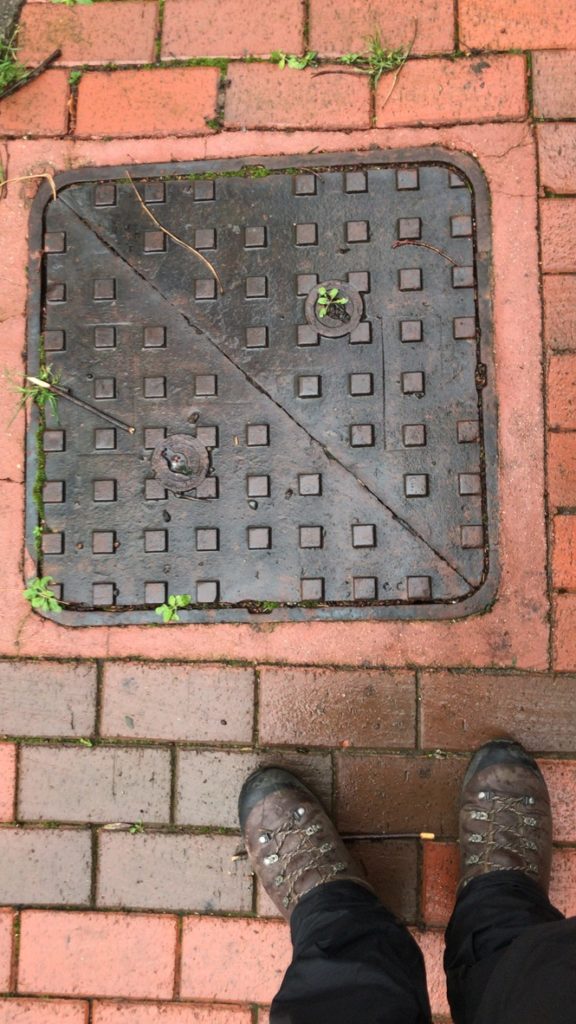
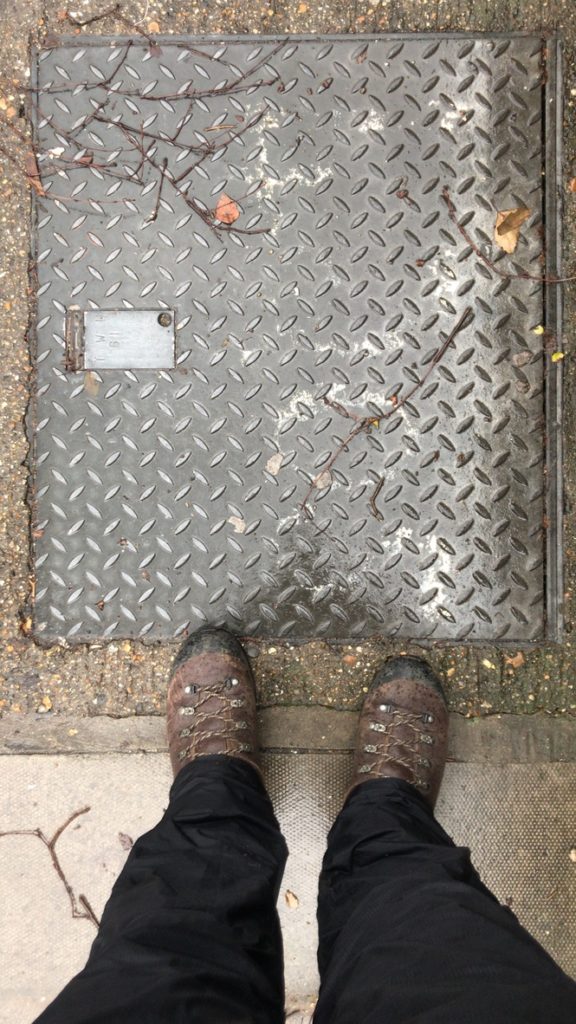
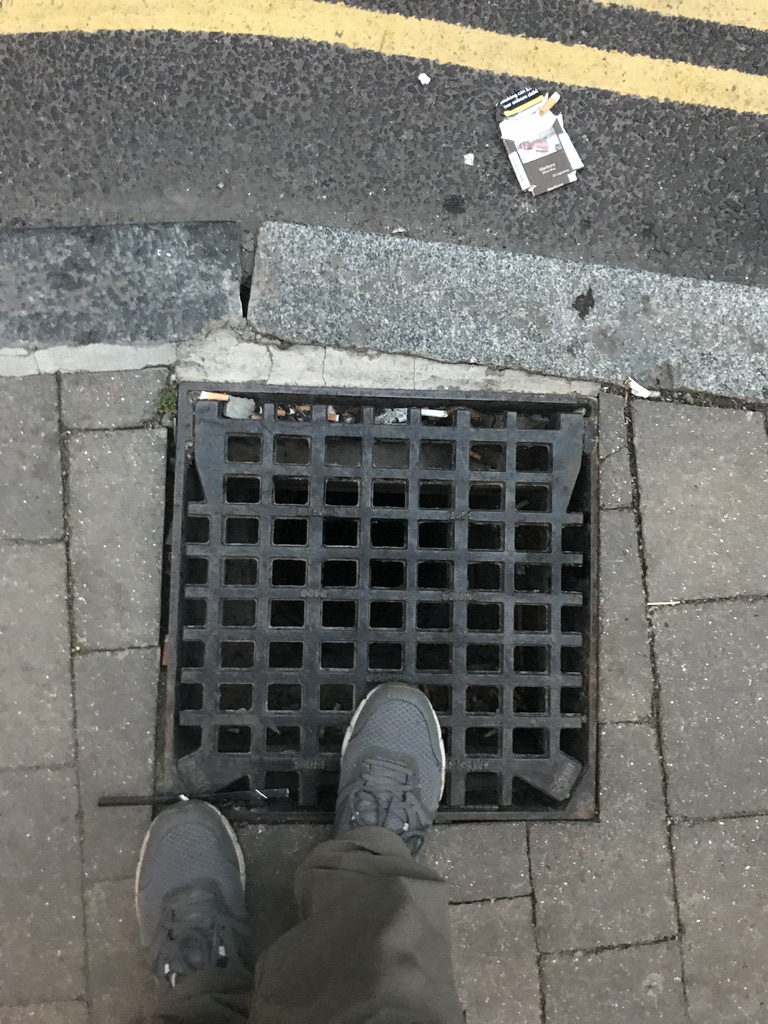

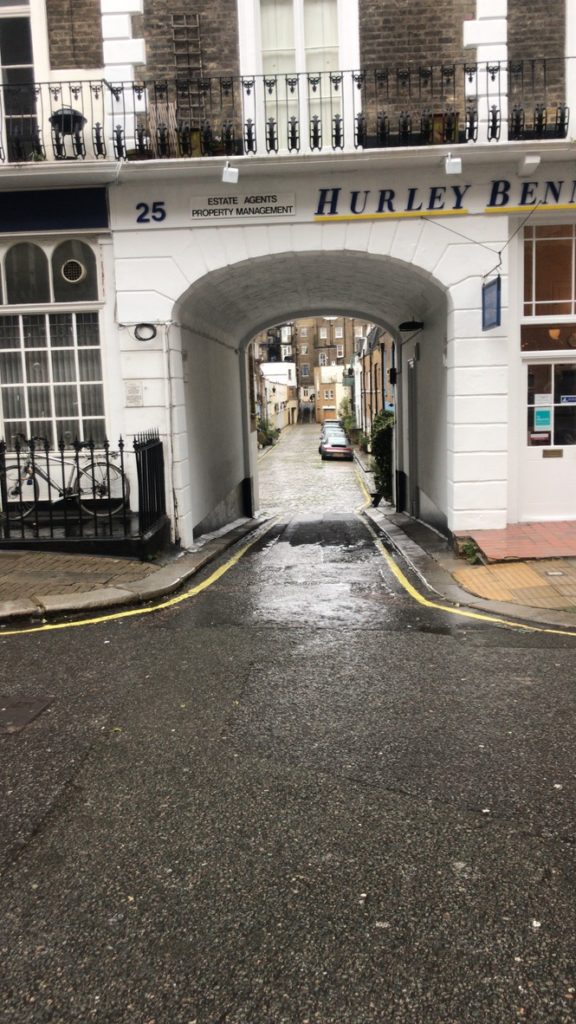
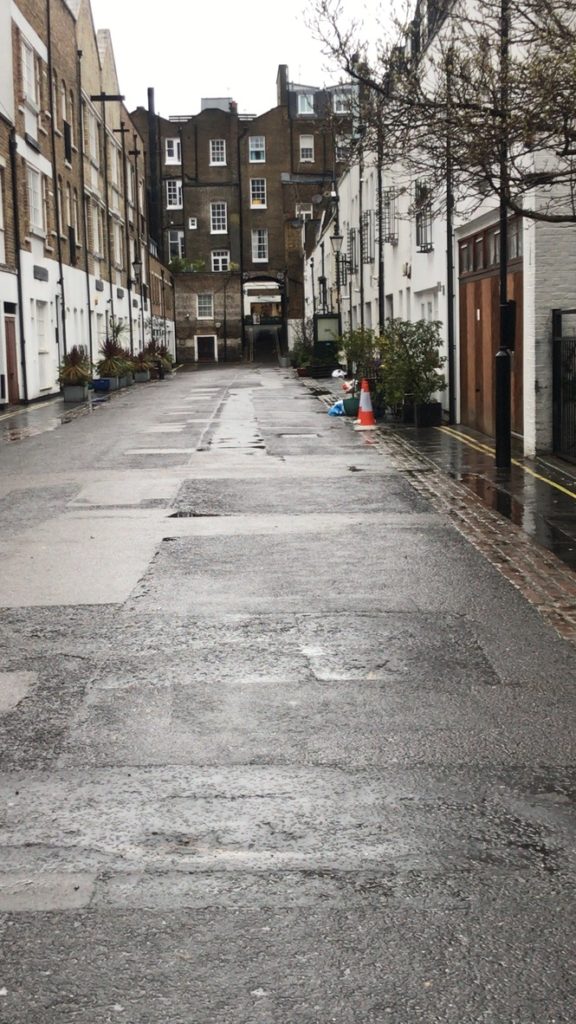
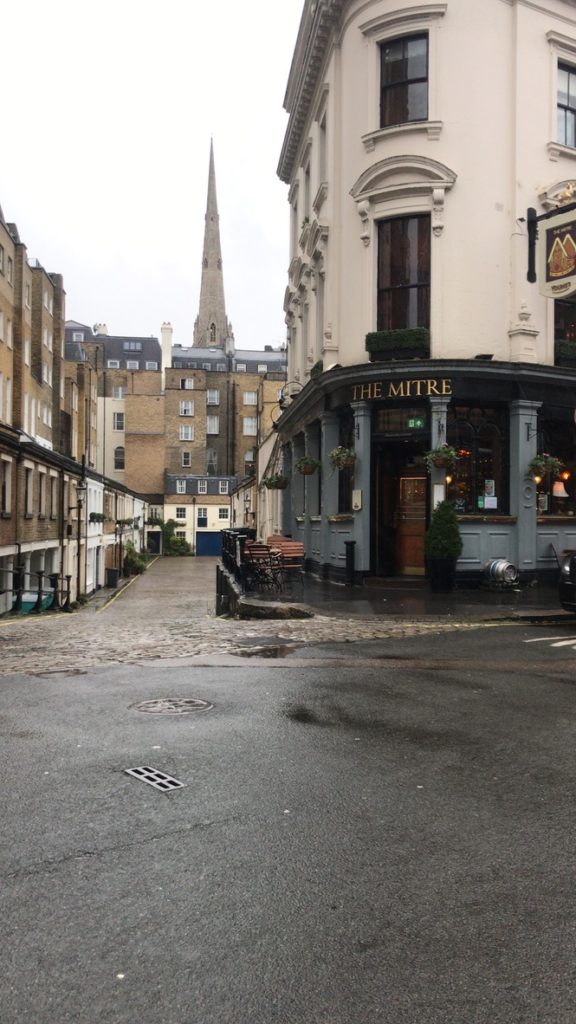
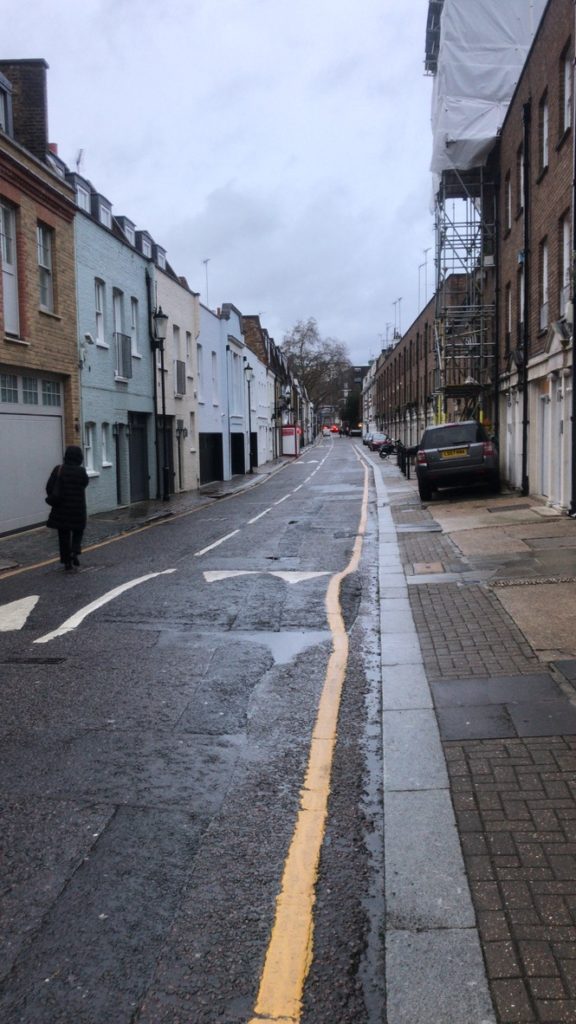
As usual in Covid Time,I started my day with your commentary. And it reminded to look at the work of Michael Andrews, British artist and his wonderful Thames paintings.
Nervous to hear there’s a daily reader.
I saw ‘Melanie and Me Swimming’ in The Tate, otherwise, sorry to say, I didn’t know he was School of London and painted Thames.
Otherwise, I apologise for having no visual arts references. So much happens on the Thames.
As Diarmuid Fiztgerald wrote (Thames Way haiku and tanka, 2015)
‘after heavy showers
the path
a necklace of puddles’